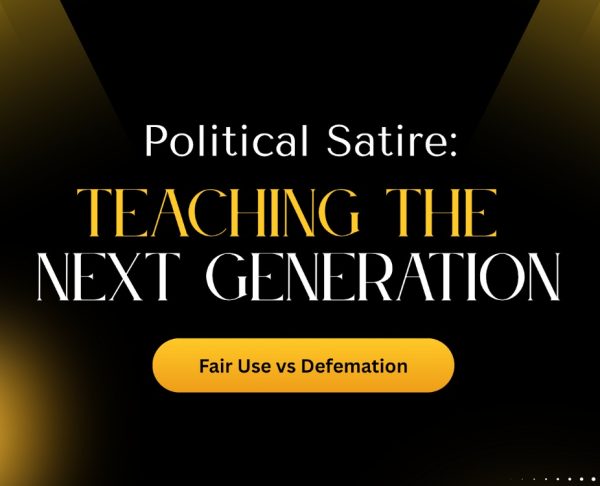The Imminent Demise of Affirmative Action: What’s Next for Diversity?
The Fall of Affirmative Action
University mission statements, in emphasizing the need to provide a comprehensive education for future leaders of society, usually note that they value exposure to a broad range of perspectives through diverse student bodies. Affirmative action, established in the 1960s as a form of restitution for minorities who suffered centuries of racial discrimination in the United States, has played a crucial role in ensuring this racial diversity in American universities.
However, over the years, many have challenged the legality of affirmative action, claiming the practice conflicts with a direct reading of the Civil Rights Act of 1964, which “prohibits discrimination on the basis of race, color, religion, sex, or national origin,” and provides students with “equal protection of the laws.” Recently, the Supreme Court cases Students for Fair Admissions v. University of North Carolina and Students for Fair Admissions v. President and Fellows of Harvard College, which were argued on Oct. 31, have contested affirmative action practices in higher education. The nonprofit group Students for Fair Admissions sued both UNC and Harvard, claiming that their admission policies violated the Civil Rights Act by failing to demonstrate strict scrutiny — a standard that requires affirmative action to be a “narrowly tailored” and “least restrictive” method of achieving student body diversity. Many experts predict that, considering the Supreme Court’s conservative majority, affirmative action will be discarded as “unconstitutional” before next fall’s college-application process begins.
The fall of affirmative action, however, should not necessarily lead to the fall of racial diversity in universities. Instead, we need another, less controversial method for promoting equal educational opportunities for all races. Direct revisions to the public school funding system could address educational inequalities between races, thereby naturally promoting diversity in higher education.
Current Funding Issues
The current system for financing public schools inherently creates an imbalance in education resources between races. In most states, local property taxes make up the majority of K-12 funding. Regions with more tax funds can, consequently, attract more-educated teachers with higher salaries, provide smaller teacher-student ratios, and offer enhanced opportunities through arts programs, science labs, field trips, and more. Therefore, a community’s wealth, or lack thereof, greatly affects the quality of that area’s public K-12 education.
According to the U.S. Census Bureau, clear divisions in wealth exist between racial communities: In 2019, Blacks and Hispanics had a poverty rate of 18.8% and 15.7%, respectively, while the rate among Non-Hispanic whites stood at 7.3%.
Historically, predominantly white neighborhoods have remained homogenous, often by refusing to sell homes to people of color or by redlining—a racist policy that labels minority neighborhoods as “hazardous,” thereby preventing them from procuring mortgages. Redlining was banned in the Fair Housing Act of 1968 and many areas, especially large cities, have made strides towards diversity. However, a 2020 study headed by demographer William H. Frey from the Brookings Institution noted that the majority of white Americans still live in relatively wealthy, non-diverse communities, while minorities are stuck in generally poorer neighborhoods.
Consequently, in 2018, school districts with the highest populations of Black, Hispanic, and Native American students received roughly $9 million less funding than predominantly white districts. In a school district with 5,000 students, this would translate to $1,800 less funding per student. Thus, schools in wealthier, predominantly white communities typically receive more funding, while those in minority communities often have a decreased ability to provide the teachers and programs that help ensure future academic success.
Diversity Through Equal Opportunity
The Declaration of Independence stresses that every man is created equal, meaning that given equal opportunity, no race should naturally dominate another. Under our current funding system, however, U.S. states are not mandated to strive for equity in public education. The natural outcome of this flawed system is that minorities who lack adequate preparatory education are not prepared to compete against those from wealthier districts with access to higher education. As Northwestern University economists C. Kirabo Jackson and Claire Mackevicius demonstrated through their research, a slight increase in funding can substantially increase high school graduation rates, test grades, and college acceptance rates; therefore, discrepancies in funding ultimately produce substantial differences in both access to and opportunities for higher education
Many opponents of race-based affirmative action policies suggest that affirmative action should instead be based on income. However, SAT scores from lower-income families indicate that this approach would not properly address the dearth of minority students who, outside of Asians, tend to score lower on standardized tests than white students do. The College Board, which administers the SAT, reports that scores from white and Black students whose families have incomes below $10,000 are 993, and 793, respectively, which means that considering income instead of race would fail to provide the desired diversity in universities. In addition, this policy change would not address the fact that minority students often lack equal educational opportunities.
Increasing funding for districts with a large concentration of low-income students; raising standards, wages, and assistance for school staff; and centralizing school funding are potential ways to improve our flawed public funding system—and research suggests that these methods can be effective. For example, New Jersey climbed to second in the nation for eighth-grade reading scores and fourth for eighth-grade math results after implementing some of these changes, according to the American University School of Education. However, it’s important to note that these changes did not specifically address inequalities in race, but inequalities in general, and resulted in disadvantaged students finally receiving a semblance of the education they deserve.
No Strings Attached
Improving public funding to K-12 schools could offer distinct advantages over affirmative action policies. Affirmative action often produces the unintended consequence of creating an internal and external stigma against its beneficiaries. According to a 2014 study conducted by the University of Michigan, “when a person is a member of a group targeted by an affirmative action plan, anyone who believes affirmative action involves preferences may not know why they were hired.” Affirmative action can introduce questions about whether or not someone’s application was accepted due to their race instead of their academic qualifications. Likewise, a student might doubt their own college admissions, fearing that they were accepted based on their race and that their peers share that belief. By contrast, providing equal opportunity in preparatory education does not suggest that certain races need an advantage in order to succeed; in other words, no stigma is attached to taking advantage of an opportunity that is available to everyone.
The U.S. Supreme Court cast doubt on the future of affirmative action in 2003’s Grutter v. Bollinger, which, while upholding the policy by a narrow 5-4 margin, hinted at its impending demise. During questioning for this year’s Students for Fair Admissions v. University of North Carolina, Supreme Court Justice Amy Coney Barrett read from Grutter v. Bollinger, “Using racial classifications are so potentially dangerous, however compelling their goals, they can be employed no more broadly.” On the other hand, increasing and equalizing public funding for K-12 education in order to ensure equal opportunities carries no inherent danger, only equity—therefore, the method is viable over the long run.
Diversity Through The Constitution
In reality, diversity through equality is diversity through the Constitution. The Constitution should guarantee equality of access to higher education—but it doesn’t. If our constantly polarizing society can agree on anything, it should be the goals of the Constitution as drafted by our Founding Fathers. At the same time, we should be unified in our concern for the utter disregard for the Constitution’s most basic aspects.
Our forebears contrived affirmative action as a way to straighten a society that should never have bent away from practices geared to ensure diversity. With its imminent fall, we must take a step back and ensure the continuation of efforts to equalize the quality of public education. Without affirmative action practices, these steps will move academia forward in a straight line toward diversity and justice.
Works Referenced
Benoit, Andrew. “Disparities Across Districts: How Illinois school funding causes inequities in learning.” Drops of Ink, 14 May 2021, www.lhsdoi.com/22179/features/disparities-across-districts-how-illinois-school-funding-causes-inequities-in-learning/. Accessed 20 Nov. 2022.
Carleton, Samantha Costanzo. “The Importance of Diversity in Higher Education.” Northeastern University, 23 Feb. 2021, www.northeastern.edu/graduate/blog/importance-diversity-higher-education/. Accessed 19 Nov. 2022.
Chen, Grace. “An Overview of the Funding of Public Schools.” An Overview of the Funding of Public Schools, Public School Review, 22 June 2022, www.publicschoolreview.com/blog/an-overview-of-the-funding-of-public-schools. Accessed 19 Nov. 2022.
Creamer, John. “Poverty Rates for Blacks and Hispanics Reached Historic Lows in 2019.” United States Census Bureau, 15 Sept. 2020, www.census.gov/library/stories/2020/09/poverty-rates-for-blacks-and-hispanics-reached-historic-lows-in-2019.html. Accessed 20 Nov. 2022.
De Vogue, Ariane, and Tierney Sneed. “Takeaways from SCOTUS affirmative action cases: Conservatives may overturn precedent allowing race as a factor in admissions.” CNN, 31 Oct. 2022, www.cnn.com/2022/10/31/politics/takeaways-supreme-court-harvard-north-carolina-affirmative-action. Accessed 20 Nov. 2022.
Douthat, Ross. “Affirmative Action Has Become a Strange Monster.” The New York Times, 29 Oct. 2022, www.nytimes.com/2022/10/29/opinion/supreme-court-affirmative-action.html. Accessed 19 Nov. 2022.
Faber, Peter L. “Lack of Racial Diversity Stunted My Education.” The Wall Street Journal, 16 Nov. 2022, www.wsj.com/articles/lack-of-racial-diversity-affirmative-action-hillsdale-swarthmore-education-11668550312. Accessed 19 Nov. 2022.
Frey, William H. “Even as metropolitan areas diversify, white Americans still live in mostly white neighborhoods.” Brookings, 23 Mar. 2020, www.brookings.edu/research/even-as-metropolitan-areas-diversify-white-americans-still-live-in-mostly-white-neighborhoods/. Accessed 20 Nov. 2022.
How companies can minimize the stigma of affirmative action. 12 Aug. 2014, news.umich.edu/how-companies-can-minimize-the-stigma-of-affirmative-action/. Accessed 24 Nov. 2022.
“Inequality in Public School Funding: Key Issues & Solutions for Closing the Gap.” School of Education, 10 Sept. 2020, soeonline.american.edu/blog/inequality-in-public-school-funding/. Accessed 19 Nov. 2022.
Jackson, C. Kirabo, and Claire Mackevicius. The Distribution of School Spending Impacts. National Bureau of Economic Research, www.nber.org/system/files/working_papers/w28517/w28517.pdf. Accessed 30 Nov. 2022.







